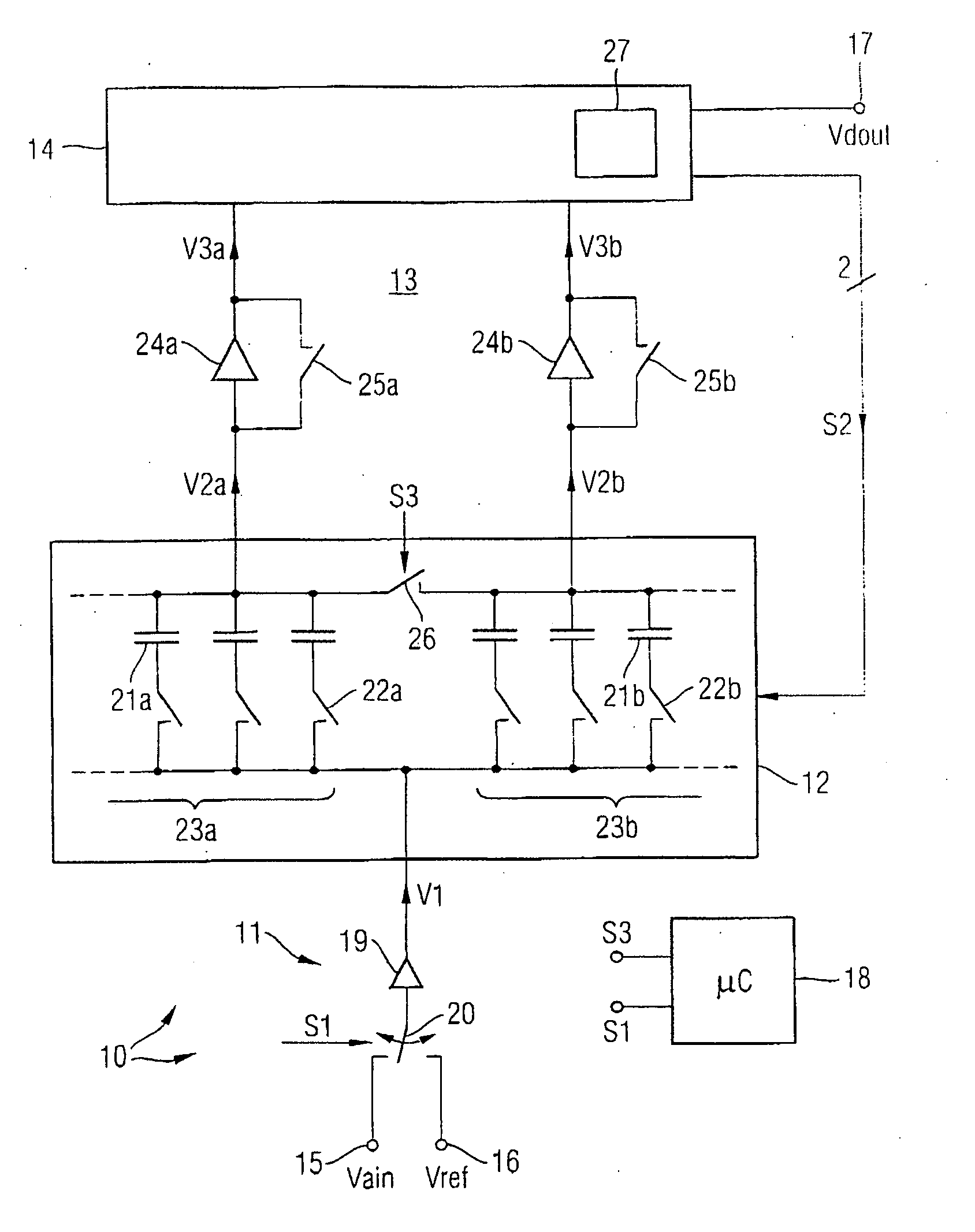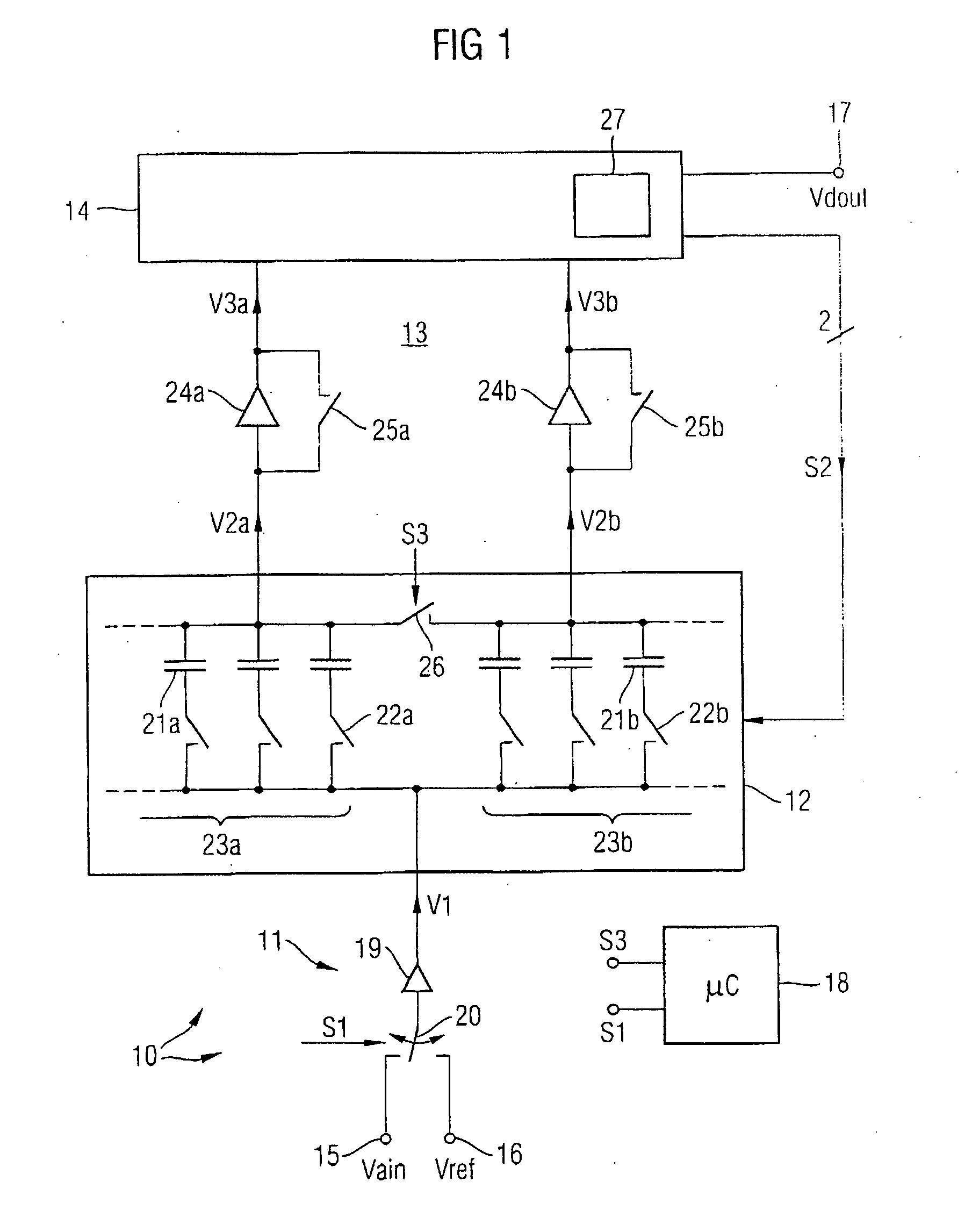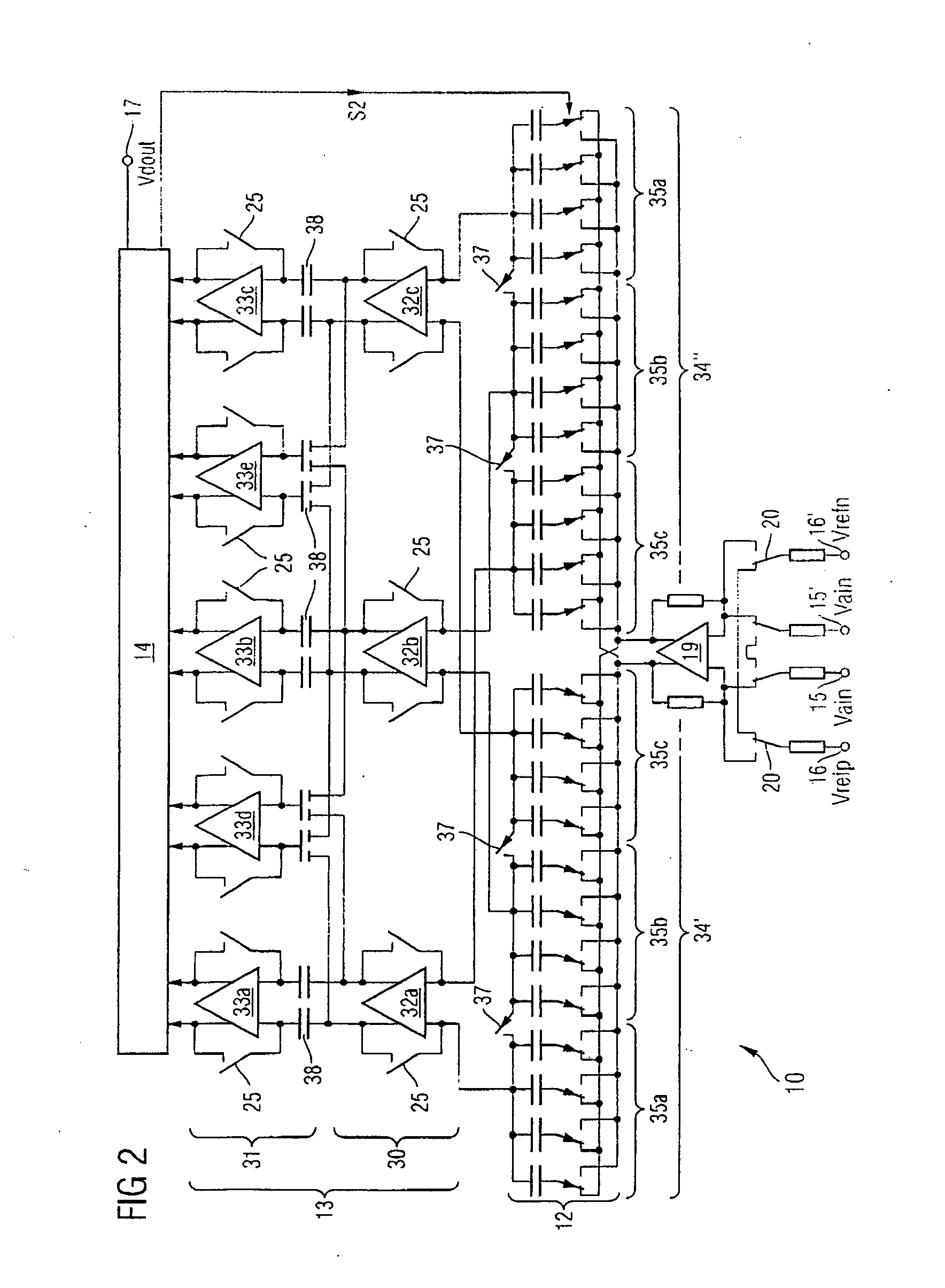Analog/digital converter
a converter and analog technology, applied in the field of analog/digital converters, can solve the problems of inability to arbitrarily shorten the conversion time and hence the conversion time of an analog input value into a digital output value, the need for a relatively large proportion of input drivers, and the power loss is also relatively high, so as to achieve fast analog/digital conversion, reduce power loss, and high capacity
- Summary
- Abstract
- Description
- Claims
- Application Information
AI Technical Summary
Benefits of technology
Problems solved by technology
Method used
Image
Examples
Embodiment Construction
[0033] In the figures of the drawing, elements, features and signals which are the same or have the same function have been provided with the same reference symbols—unless stated otherwise.
[0034]FIG. 1 shows a block diagram of a first general exemplary embodiment of an inventive successive approximation A / D converter.
[0035] The A / D converter in FIG. 1 is denoted by reference symbol 10. In FIG. 1, the A / D converter 10 shown therein is first of all shown in nondifferential form, but this could very easily also be shown in differential form.
[0036] The A / D converter 10 essentially has an input buffer circuit 11, a capacitive network 12, a comparator stage 13 and a logic circuit 14. These circuit parts 11-14 of the A / D converter 10 are arranged between inputs 15, 16 and an output 17. In addition, a control device 18 is provided which can be used to control the function of the A / D converter 10.
[0037] A first input 15 can have the analog input signal Vain which is to be converted into ...
PUM
 Login to View More
Login to View More Abstract
Description
Claims
Application Information
 Login to View More
Login to View More - R&D
- Intellectual Property
- Life Sciences
- Materials
- Tech Scout
- Unparalleled Data Quality
- Higher Quality Content
- 60% Fewer Hallucinations
Browse by: Latest US Patents, China's latest patents, Technical Efficacy Thesaurus, Application Domain, Technology Topic, Popular Technical Reports.
© 2025 PatSnap. All rights reserved.Legal|Privacy policy|Modern Slavery Act Transparency Statement|Sitemap|About US| Contact US: help@patsnap.com



